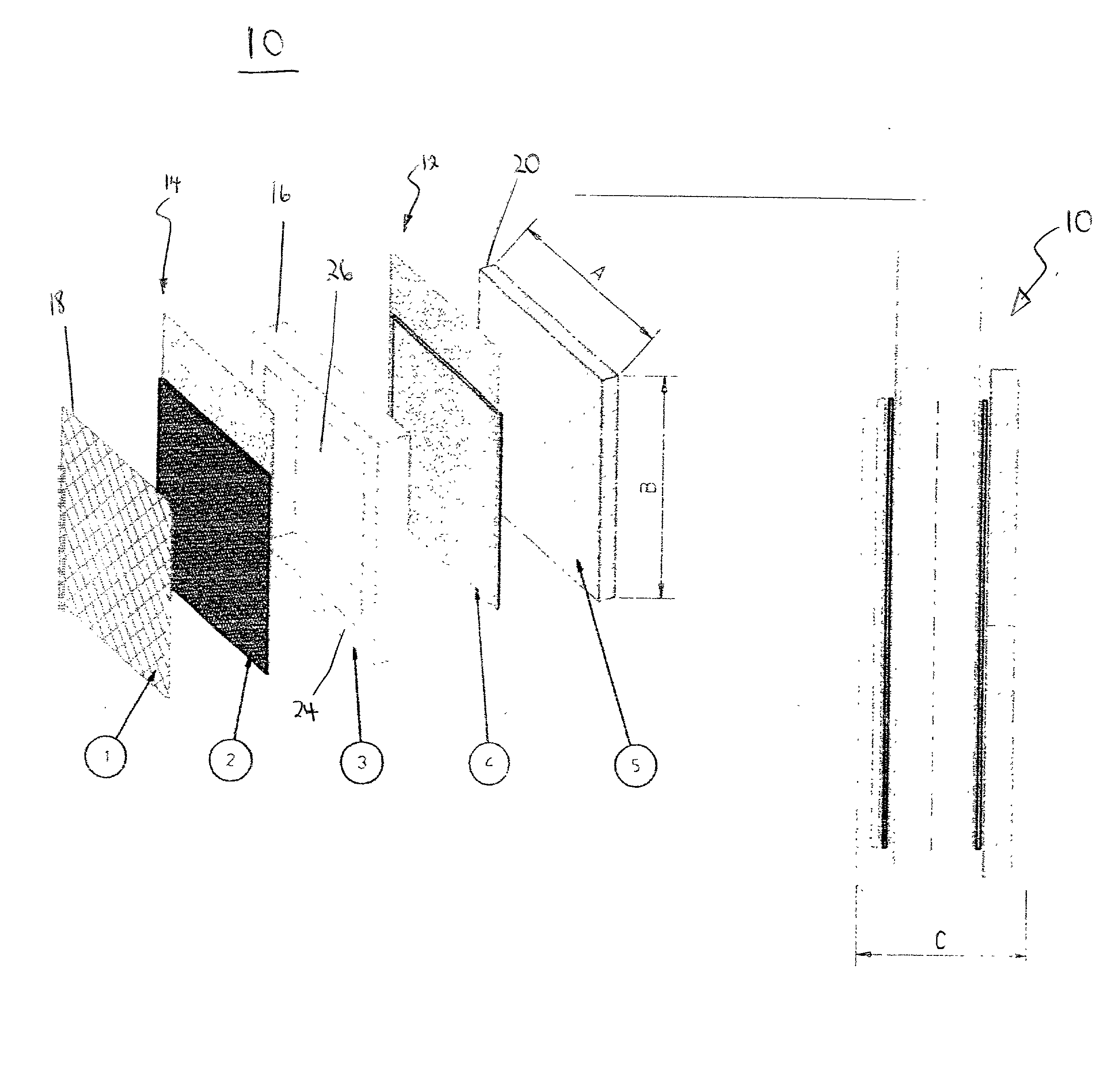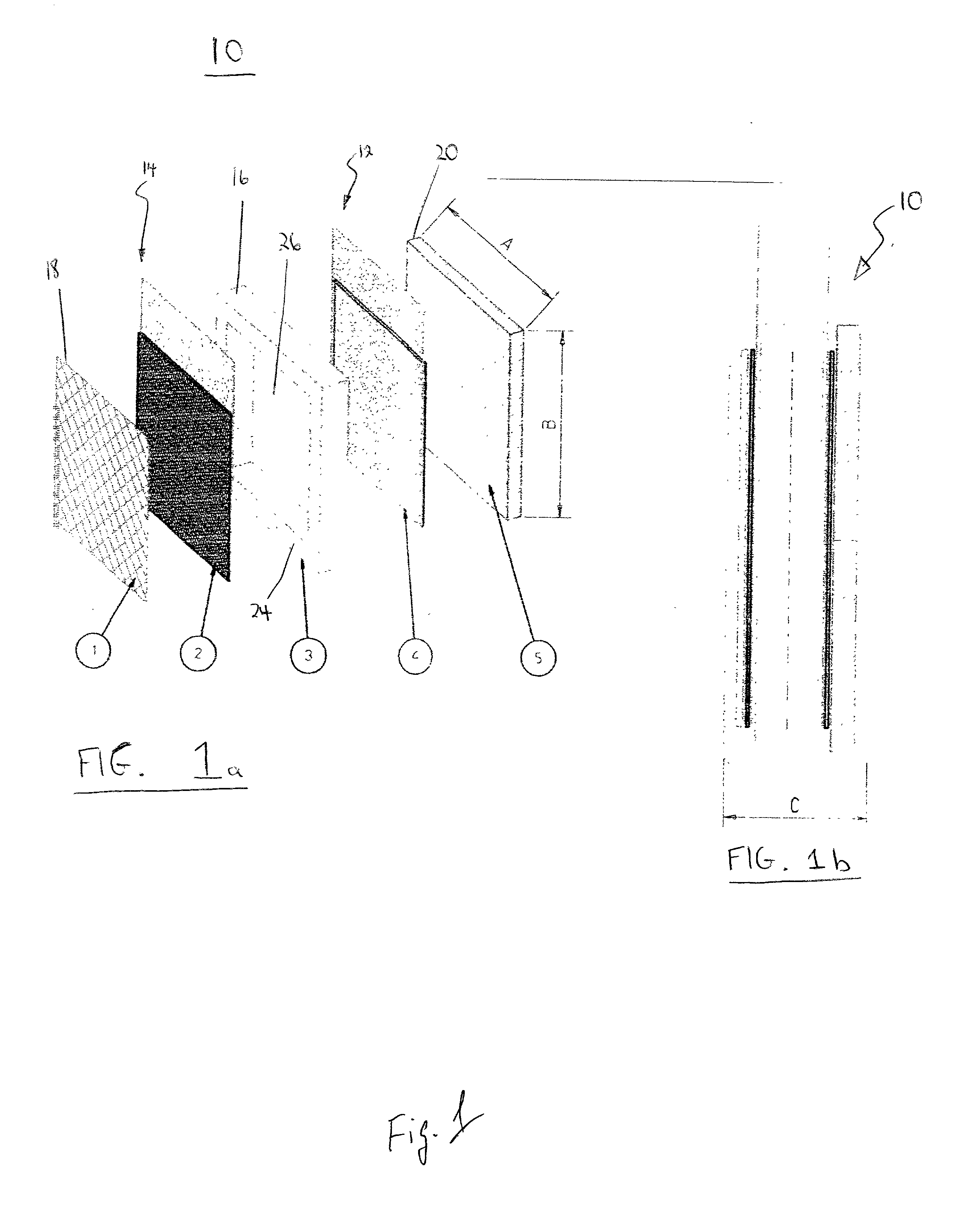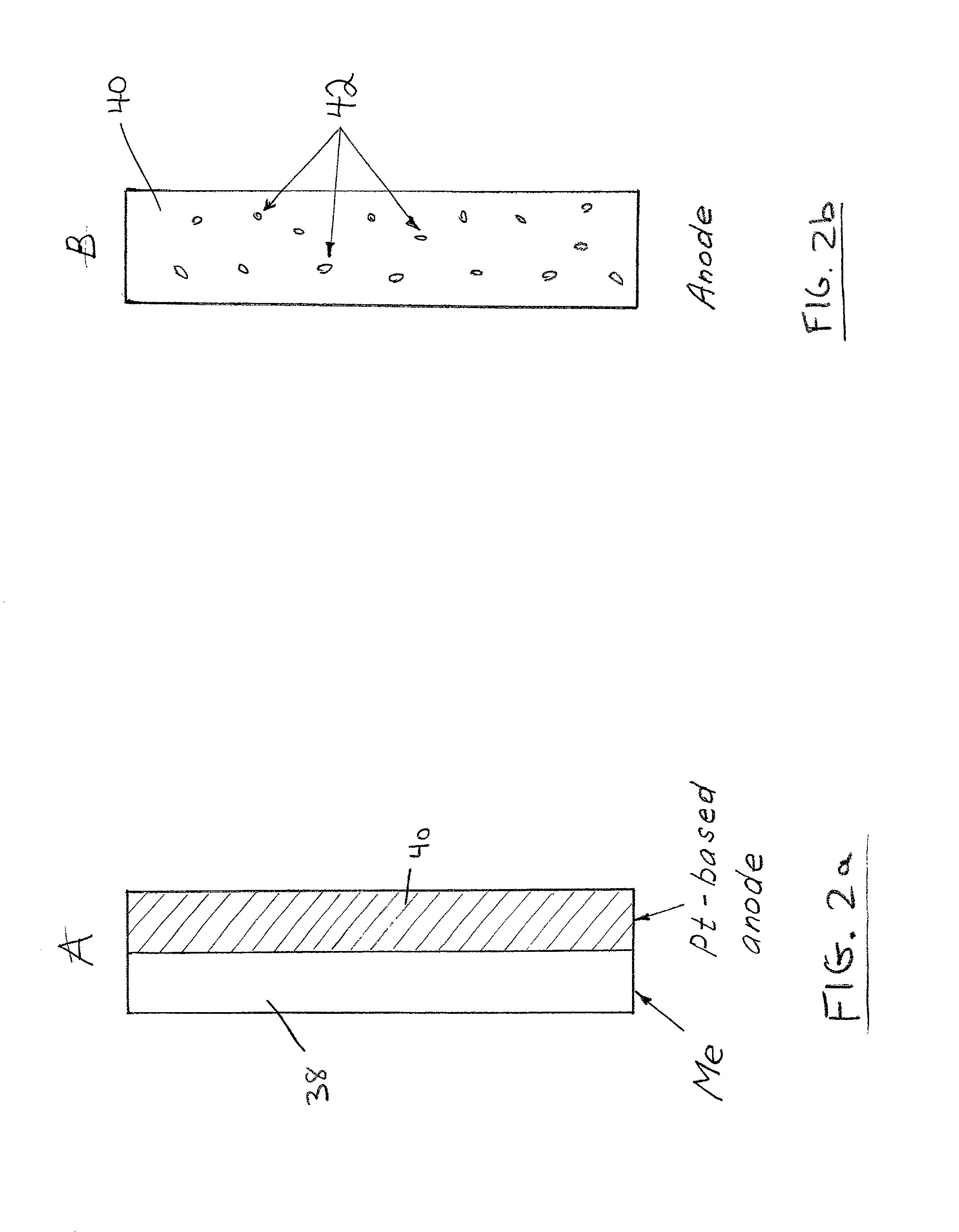Direct liquid fuel cell and a novel binary electrode therefor
a liquid fuel cell and binary electrode technology, applied in the direction of fuel cells, fuel and primary cells, insertable electrodes, etc., can solve the problems of dmfcs without liquid electrolyte, limited utility and application, and inability to use polymer exchanged membranes in dmfcs. not particularly successful,
- Summary
- Abstract
- Description
- Claims
- Application Information
AI Technical Summary
Problems solved by technology
Method used
Image
Examples
example 1
[0101] The fuel cell includes the cathode disclosed in a pending patent of the inventors (U.S. patent application Ser. No. 09 / 503,592) i.e., a Pt / Ru (1:1) catalyst, placed on a nickel mesh anode, and combined with an aluminum powder as a solid fuel source. The construction of the cell corresponds to FIG. 4a.
[0102] During the initial stage of the fuel cell discharge, when the value of the current exchange rate for the oxidation of methanol is significantly larger than that of Al oxidation (I.sub.0.sup.CH.sup..sub.3-.sup.OH>>I.sub.0.sup.Al), the actual current density of a cell is completely defined by the oxidation of methanol. As the formation of CO (Reaction 4) on the catalytically-active surface of the anode increases, the current exchange rate for the oxidation of methanol gradually decreases, until reaching the condition in which I.sub.0.sup.CH.sup..sub.-3.sup.OH<<I.sub.0.sup.Al. At this point, the overall current density of the fuel cell is defined, approximately, by k.sub.0.su...
example 2
[0108] The fuel cell includes the cathode disclosed in a pending patent of the inventors (U.S. patent application Ser. No. 09 / 503,592) i.e., a Pt / Ru (1:1) catalyst, placed on a nickel mesh anode, and combined with an aluminum powder as a solid fuel source. The construction of the cell corresponds to FIG. 4b.
[0109] The processes in the cell are substantially identical to those described in Example 1.
[0110] The theoretical capacity of the binary electrode is 1.5 Ah / g. The experimental cell provided a measured capacity of 0.9-0.95 Ah / g.
PUM
 Login to View More
Login to View More Abstract
Description
Claims
Application Information
 Login to View More
Login to View More - R&D
- Intellectual Property
- Life Sciences
- Materials
- Tech Scout
- Unparalleled Data Quality
- Higher Quality Content
- 60% Fewer Hallucinations
Browse by: Latest US Patents, China's latest patents, Technical Efficacy Thesaurus, Application Domain, Technology Topic, Popular Technical Reports.
© 2025 PatSnap. All rights reserved.Legal|Privacy policy|Modern Slavery Act Transparency Statement|Sitemap|About US| Contact US: help@patsnap.com



